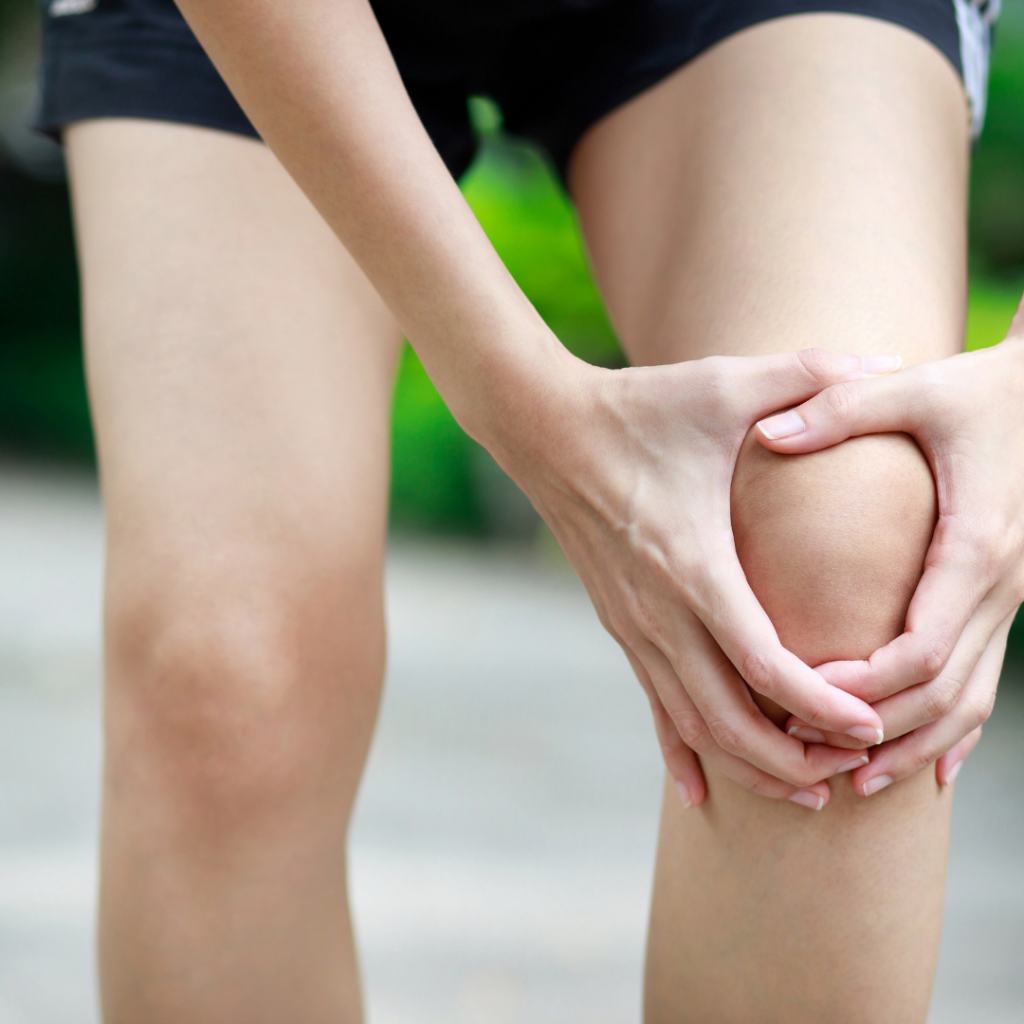When I tell a patient they have Osgood-Schlatter disease, they often look either blank or incredulous. I get it. Few people have heard of Osgood-Schlatter disease and, let’s face it, it does sound a bit like a made-up name!
Now if you’re told your child has a condition you’ve never heard of before, you’re bound to have a few questions about it. So here are the answers to the questions we’re most commonly asked about Osgood-Schlatter disease.
1. What is Osgood-Schlatter disease?
It’s an overuse injury that causes pain and swelling below the knee in a spot known as the tibial tuberosity (another great name). This is where the patellar tendon attaches to the top of the shinbone or tibia. Osgood-Schlatter disease may cause a swollen bump in this area that is very sore to the touch. Osgood-Schlatter disease usually develops during the stages of bone maturation (8-13 years old in girls and 10-15 years old in boys). This condition mostly appears in active adolescents and is usually secondary to repetitive activities such as jumping, sprinting and squatting. Given the nature of these activities, we see Osgood-Schlatter developing commonly in sports like basketball, volleyball, gymnastics and football codes.
2. Who were Osgood and Schlatter?
They were a couple of surgeons who described the disease at the same time in 1903 and so had to share the glory of naming it. Osgood was an American and Schlatter hailed from Switzerland.
3. What are the symptoms of Osgood-Schlatter disease?
If your child has developed Osgood-Schlatter disease, they’re likely to experience pain, swelling and tenderness just below the kneecap.
The pain usually eases with rest and worsens with repetitive knee activity.
Most people only experience symptoms in one knee, but there are an unlucky few children (about 20-30%) who get Osgood-Schlatter in both knees.
4. What causes Osgood-Schlatter disease?
Growth spurts and repetitive activity involving the knees such as sprinting, jumping and squatting.
Sometimes you look at your child and think, ‘Wow, they’ve shot up!’ And they have. They’ve had a sudden growth spurt and it feels like they’ll soon be taller than you.
Your child’s bones grow at their ends, near the joints, in an area known as the growth plate, which is made of cartilage, not bone.
Kids are active creatures. They run, jump, play soccer, dance ballet and shoot basketball hoops. Those repeated movements end up causing their tendons to pull on the growth plate, causing irritation, swelling and pain. Hello, Osgood-Schlatter!
5. Who is most prone to Osgood-Schlatter disease?
The people most likely to experience Osgood-Schlatter disease are children and adolescents who:
- Are experiencing sudden growth spurts
- Play sports involving high impacts and repetitive movements or sudden changes of direction like soccer, basketball, ballet or skating
- Are of male gender (risk factor and higher occurrence in boys)
- Are ages 10-15 (males) or 8-13 (females)
If your child has poor flexibility of their quadriceps and hamstrings muscles, they might be more prone to Osgood-Schlatter. Those tight muscles are therorised to pull harder on the tendons attached to their shin bone and so are more likely to irritate the growth plate.
The condition may last weeks or months and can recur until your child finishes growing or if left unnoticed or untreated.
6. How is Osgood-Schlatter disease diagnosed?
Osgood-Schlatter disease is usually well diagnosed through a clinical examination and a good patient history. Physiotherapists are well trained in assessing and diagnosing this condition and some GPs may be able to successfully diagnose this condition also.
Radiological imaging is usually not required, however an X-Ray may be ordered to check other aspects of your child’s growth or in severe cases where there is concern there may be an avulsion fracture (a small piece of bone attached to a tendon gets pulled away from the main part of bone).
7. How do you treat Osgood-Schlatter disease?
Some children and adolescents recover from Osgood-Schlatter through the simple, age-old treatments of time and rest. Limiting sports and repetitive activity for 6-8 weeks is usually advisable. Pain usually subsides when your child’s shin bone stops growing.
Physiotherapy is an evidence-based treatment for Osgood-Schlatter. Your child’s physiotherapist will aim to educate both child and parent/s about the condition, providing valuable information and strategies to help manage pain and symptoms. Your child’s physiotherapist can also develop a program of exercises that will look at strengthening and stretching their quadriceps (front thigh muscles) and hamstrings (back thigh muscles). When those muscles become more appropriately used, it eases the pressure/tension on the growth plate.
Your child’s physiotherapist may also recommend additional or modified exercises to help strengthen their legs, desensitise them to pain and provide more stability to their knee joint.
Finally, they may use a patellar tendon strapping technique to relieve pressure on your child’s knee cap for a while or even prescribe a suitable brace.
How can Sycamore Health help?
We love helping kids and adolescents to find relief from Osgood-Schlatter disease and continue in their active and sporting lifestyles through to adulthood!
Our skilled and experienced physiotherapists can provide important advice and education regarding your child’s condition and your options for management and treatment moving forward. They will also help to create a program of exercises to strengthen your child’s legs, improve their flexibility, desensitise them to their pain and support them to continue enjoying an active lifestyle as they grow. This condition should not be scary and be an end to your child’s active lifestyle, it is often well managed, has good outcomes and we would love to be able to help your child experience good outcomes also.
Book an appointment today.
Disclaimer
All information is general in nature. Patients should consider their own personal circumstances and seek a second opinion.





